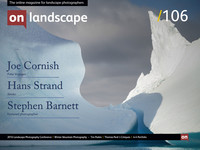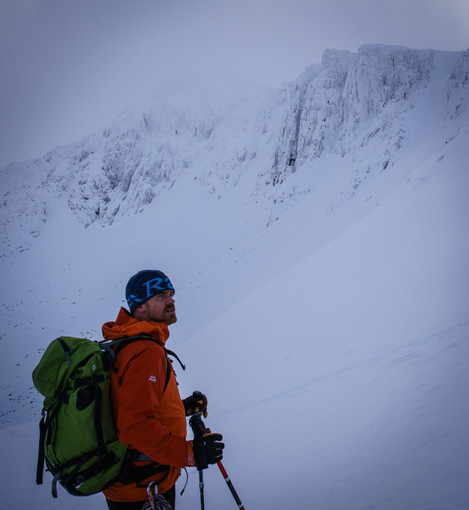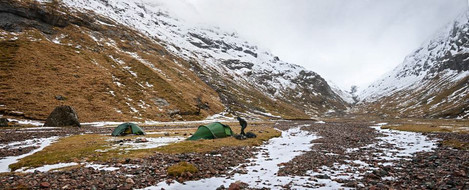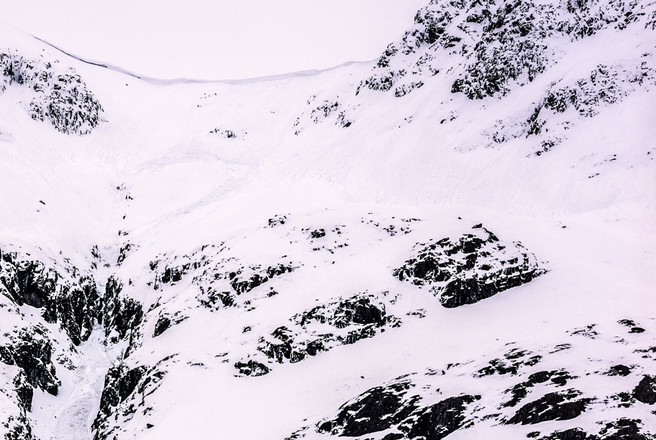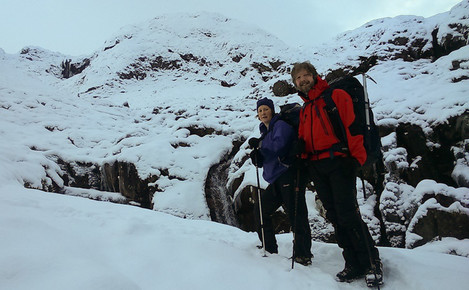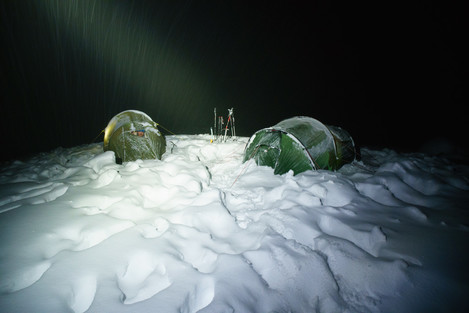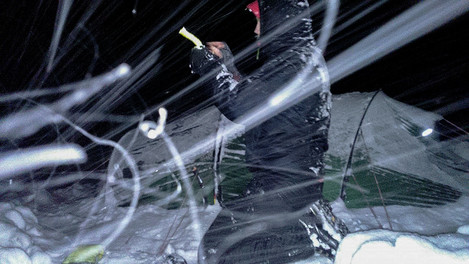Camping Above the Three Sisters

Tim Parkin
Tim Parkin is a British landscape photographer, writer, and editor best known as the co-founder of On Landscape magazine, where he explores the art and practice of photographing the natural world. His work is thoughtful and carefully crafted, often focusing on subtle details and quiet moments in the landscape rather than dramatic vistas. Alongside his photography and writing, he co-founded the Natural Landscape Photography Awards, serves as a judge for other international competitions. Through all these projects, Parkin has become a respected and influential voice in contemporary landscape photography.
Colin Prior’s books on Scotland’s mountains were one of my first introductions to the world of landscape photography. Highland Wilderness and The Wild Places showed me the beauty of Scotland’s finest peaks but it was the winter depictions that really grabbed me. Over the last decade me and my wife Charlotte have visited Scotland every year and most of these visits have been to Glencoe. We’ve always wanted to ‘get up high’ and despite some longer walks have never done so due to lack of skills and fitness. Two years ago we decided it was about time to do things properly and we employed the services of Rich Pyne. Rich was recommended by a colleague because of his wealth of direct experience on the hill. Although Rich suggested a trip to Ben Nevis (more likely to get snow) we decided on trip to the Lost Valley in memory of our late sister in law, Maria, who died of cancer three years ago.
The Inspiration
Our First Trip
We decided a slightly less challenging first experience would be appropriate and hence planned an overnight camp in the Lost Valley and an ascent up the back wall. The King’s Head makes an appropriate base for most operations in Glencoe (although the Clachaig is warmer and friendlier) and so on the morning on the walk we awoke to hovering freezing conditions and a snow pack that started at 500m with nothing below it.
Once the tent was set up we spent the afternoon practising ice axe self arrests and the use of the ice axe as general safety aid. We also reviewed Avalanche conditions (more about that later). After a gusty evening (not due to the curry) we spent the next day walking toward the back wall and working on crampon technique. After a few photographs and a brief break we were going to ascend Gearr Aonach via a south western gully. However, after seeing a big avalanche on the side of Beinn Fhada and then some cracking noises above us (sounded like shotguns firing) we decided a quick descent was probably the order of the day.
Take Two (Years)
So all in all we learned a hell of a lot but didn’t get much snow or altitude but I did manage to take a couple of large format pictures whilst tucked into a snow hole we dug in the side of the hill. Two years later (doesn’t time fly!) and little chance to make the most of our skills we decided to call on Rich’s services again but this time for a more challenging trip. This time we wanted to camp a bit higher and walk higher still in order to make sure we got some snow. The plan was to walk up to Coire nan Lochan, set up camp, do a little playing and then the following day to walk up to Stobh Coire nan Lochan.
This time I planned to take the Sony A7RII and the Canon 24-70 f/4 IS lens mounted on a Peak Design clip on my strap as I realised that most photographs would be taken whilst on the move and the in body IS and lens IS of the Sony/Canon hybrid allows me to take very slow exposures at very high ISOs and still get good results.
Ascending
The only ‘snag’ on the walk was a nasty step over a 45 degree sloping rock that funnelled down to a 30ft drop into the river. Instead of trying to make the step we decided to scramble up the 12ft cliff on the left hand side. It was quite embarrassing to see the 'climby' types just stride across the gap.
We met up with Rich on the way and made the final steps to Coire nan Lochan without crampons and axe because of the deep snow, with Rich teaching us good boot technique along the way.
Camping
Finding a place to set the tents up was fun with nearly a foot of snow on the ground. Too flat and you might have found a lochan and you don’t know where the rocks are. Fortunately Rich had brought a snow shovel, a very, very useful accessory for this and other, more personal, tasks. Tents up and a quick dinner and we took a walk over to Aonach Dubh, foregoing the self arrest practise as the thick, new snow was doing enough arresting to make any sort of slide impossible. The cloud was well and truly in though and so we declared the day over, had a rest in the tent, cooked some food and hid for the night.

